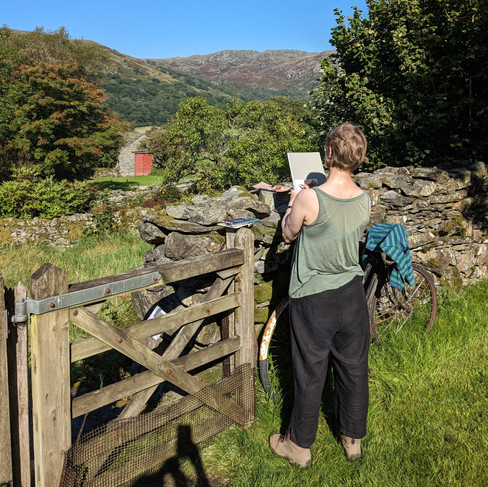Look more carefully, see more clearly. The benefits of learning to draw.
- LS

- Feb 8, 2024
- 3 min read

When my son started at one of London’s art schools to study sculpture in the noughties, I asked him if he was being taught drawing. He looked non-plussed and mumbled something about a tutorless, optional life drawing class once a week. This was becoming typical across most art schools: drawing – or at least being taught drawing – was a thing of the past. There was a growing suggestion that learning to draw would stifle your intuitive, spontaneous creativity. The emphasis was now on defining your ‘practice’ and readying yourself for life as a professional artist (CV/Website/Exhibitions/Happenings). The latter might well have been useful to my generation; we left art school with no preparation for or orientation in the art world. But we had at least been taught to draw.
It was in the late 80s that the antipathy to teaching drawing gained traction. At the time I was just finishing studying at the Royal Academy Schools, which was famous for its traditional emphasis on drawing: all first years spent their entire day, month after month, drawing from a life model. But even at the RA, soon after I left, drawing became voluntary. If it hadn’t been compulsory when I was there, I don't think many of us would have persisted in the Life Room. We were a mixed bunch, opinionated, interested in what was new and ‘modern’, not at all convinced (in some cases adamantly unconvinced) that life drawing was a necessary part of our development as artists.

But, as we toiled away, week after week, gently guided to look more carefully, to see more clearly, by a stream of wise, patient, awe-inspiring artist-tutors (Norman Blamey, Leonard McComb, Sonia Lawson, Ben Levine, Patrick Symons and Carel Weight are the ones I particularly remember), the scales gradually fell from our eyes. I distinctly recall having a kind of epiphany about three months in – three months of drawing from the model all day, every day. Watching Norman Blamey draw, with meticulous attention and clarity, the juxtaposing planes of the model’s shoulder and collar bone, I was all of a sudden starkly aware of what I had, until that moment, not been able to see. It was an electrifying moment.
As the months wore on, we all became impatient to start ‘our own work’, to nab our ‘space’ in the studios, and do our own thing. Eventually we were released from the Life Room and we set to work – some of us working figuratively, others making expressive abstract paintings; some interested in colour and shape, others in narrative and allegory. Only one student continued to work from the model every day. But the experience had been seminal for all of us. We had learned to look, to see, to connect with and assimilate something outside of ourselves, and in so doing, we had become better artists. It didn't matter that we might now be painting loose, expressive compositions, or creating precise, abstract, geometric sculptures; we had learned to see the nuanced effect of a marginally adjusted angle, a stronger or a more tentative mark, a contrasting texture or the relationship between shapes and spaces on a page.
Although the pendulum of art education has swung back towards some recognition of drawing as an essential artistic practice in recent years, its teaching remains patchy. Even in schools, where GCSE and A level portfolios must all contain 'drawing', there is no particular value given to the importance and satisfaction of learning to draw from observation. Slavishly copying a photograph will often produce a superficially more skillful result, and is an easier way to guarantee high marks. Inevitably, this is the go-to approach. Sadly, students who are attracted to Art because they love to draw are too often taught quick-fix, formulaic techniques to produce slick work, rather than being given the tools and time to find and develop their own voice and visual language.
The good news is, it's never too late! Everyone can learn to draw. It is a fundamental human activity. By drawing, we learn to look with complete attention, to see more clearly and to connect and interact more intensely with our world. At Long House Studios we run many courses, each with a different focus, but all begin with drawing from observation. I hope that everyone who comes to us will leave with keener vision, an enhanced connection to their surroundings, and increased awareness of and confidence in their personal creative language.
If you would like to find out more, get in touch.
Or check out the courses on offer this Spring and Summer!












Lovely to read your views on observing and drawing. I’m very excited to be coming to life drawing with you in April.